Abstract
Cell cultures derived from Crohn's disease and control tissues were subjected to a series of tests designed to detect persistent, non-cytocidal virus infection. No evidence for any such infection was found, and it is concluded that persistent viral infection of gut tissues is unlikely to play a significant role in the pathogenesis of Crohn's disease.
Full text
PDF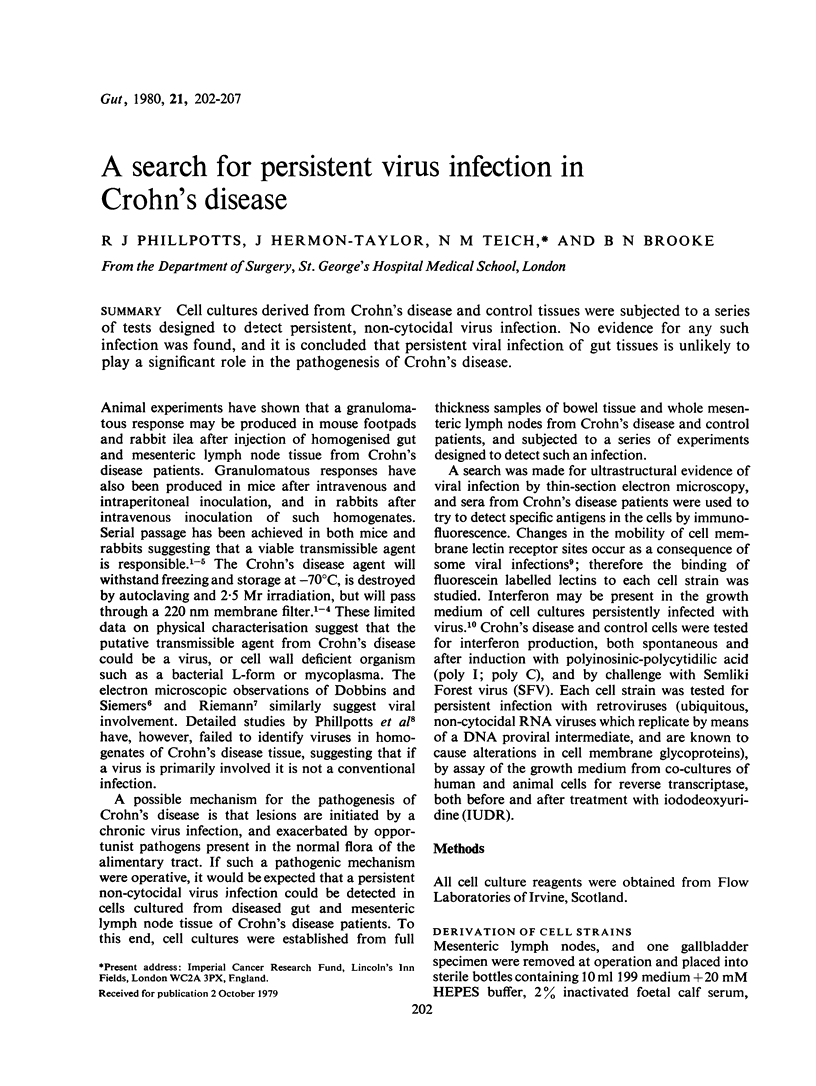
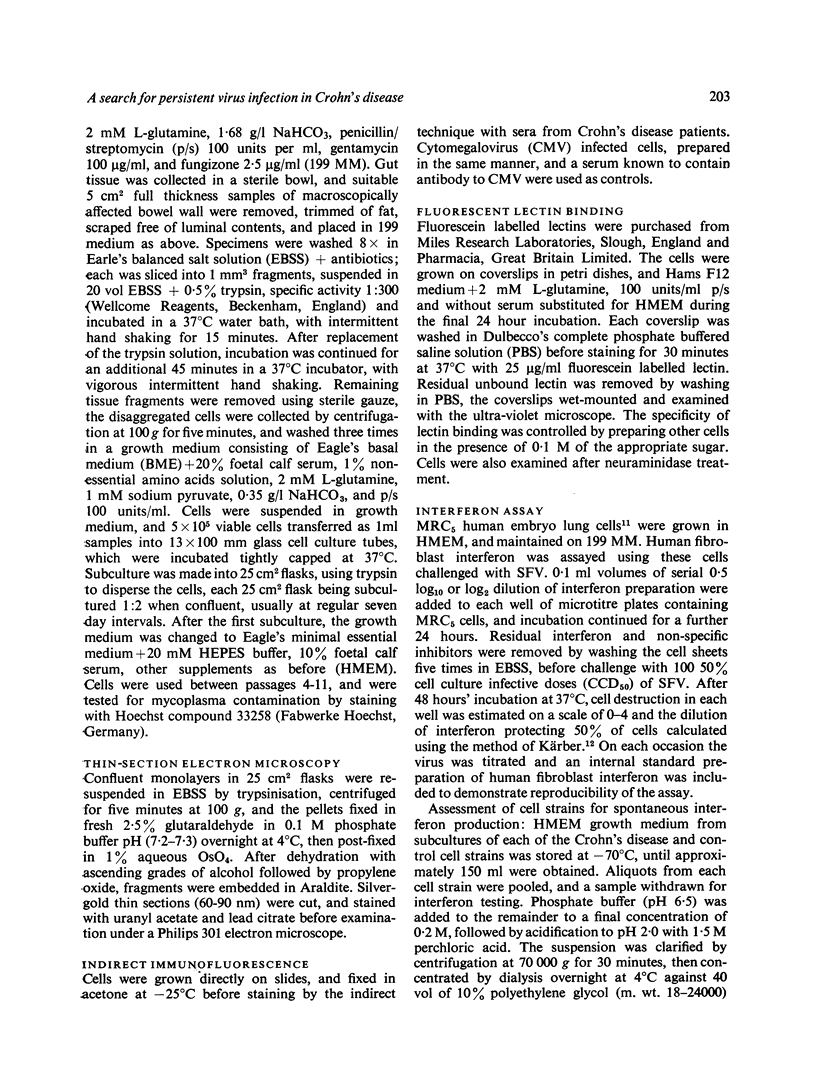
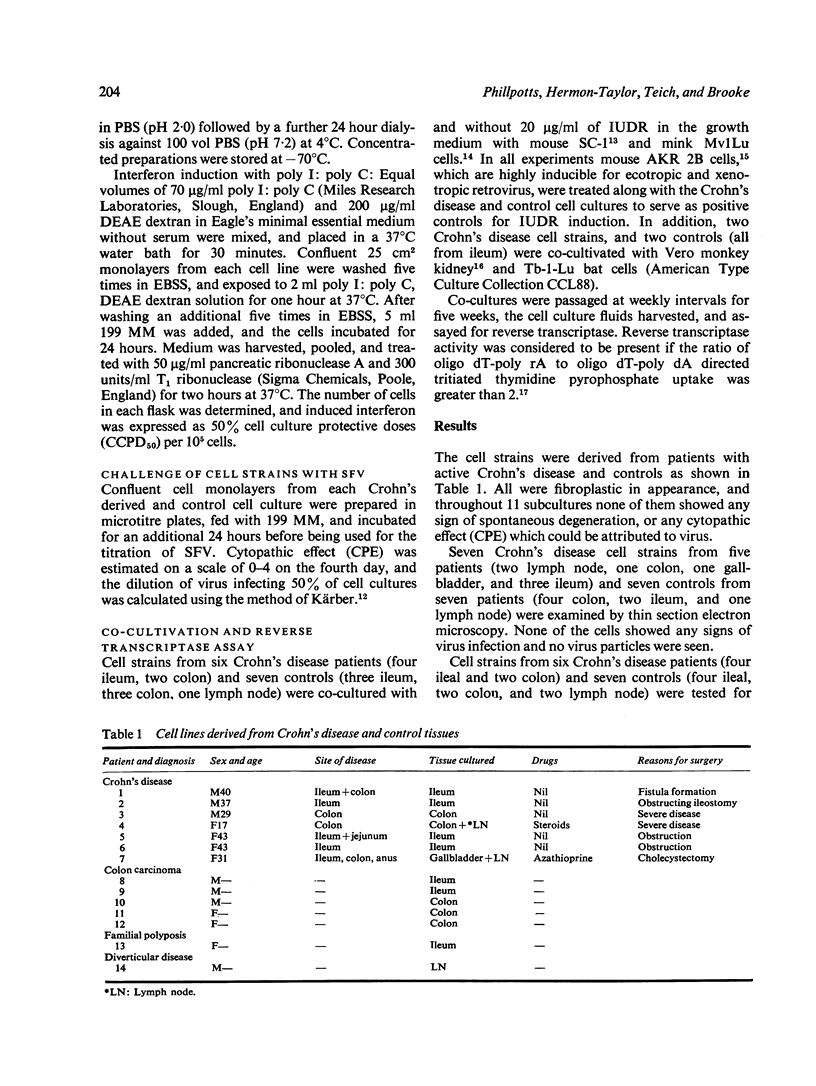
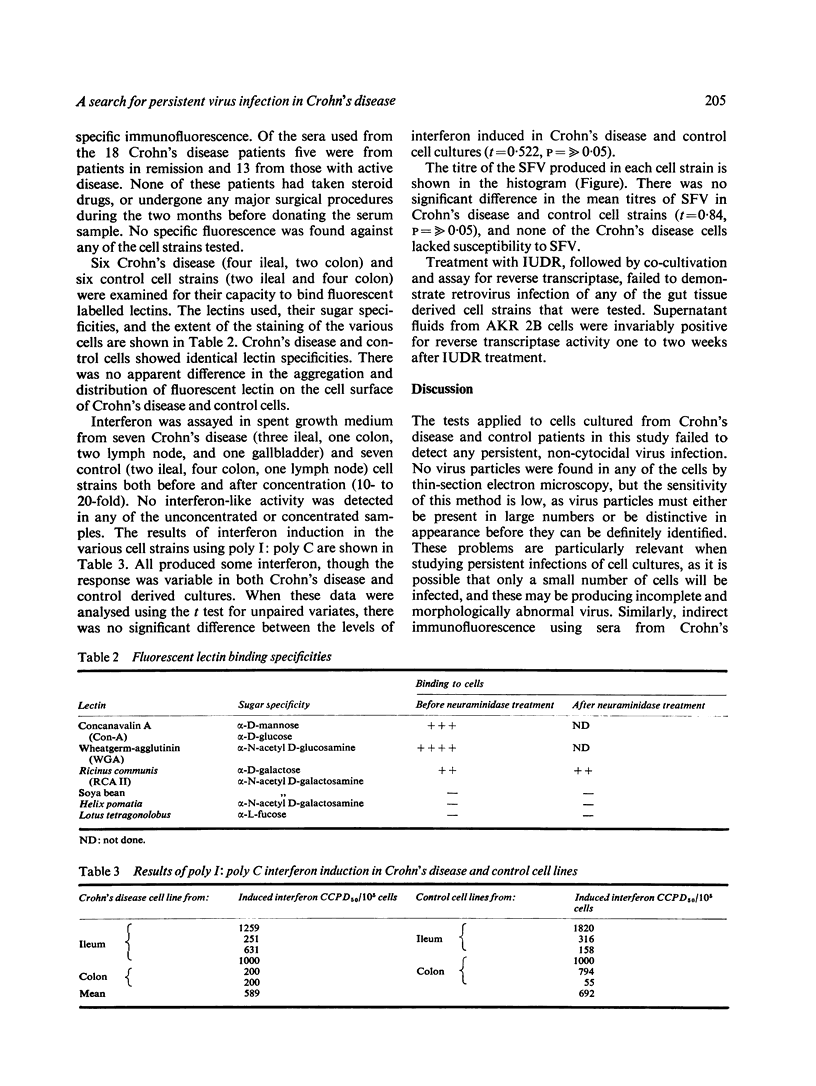
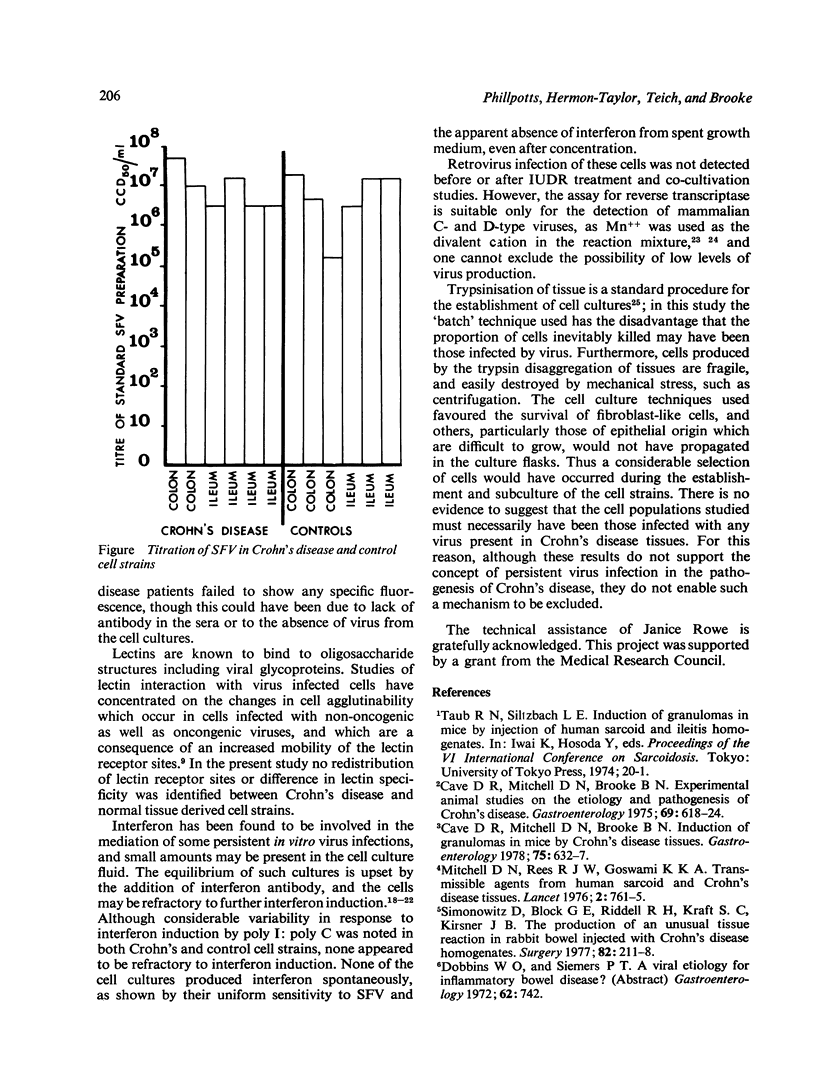
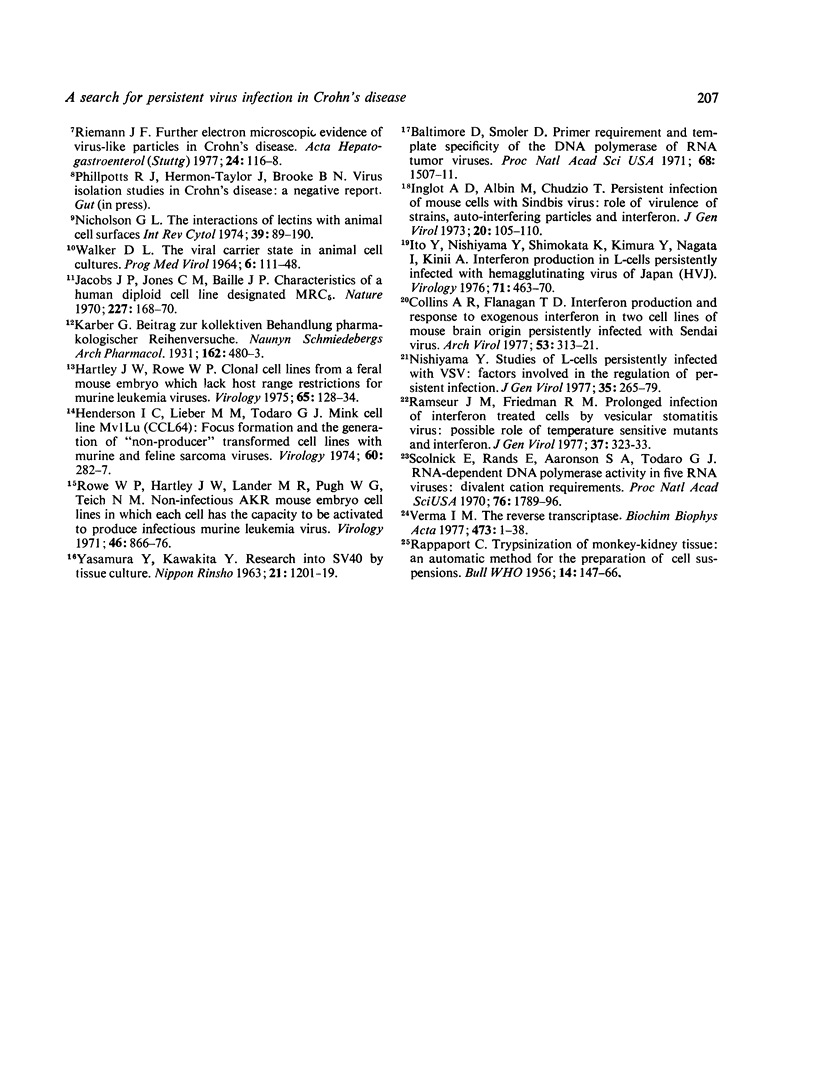
Selected References
These references are in PubMed. This may not be the complete list of references from this article.
- Baltimore D., Smoler D. Primer requirement and template specificity of the DNA polymerase of RNA tumor viruses. Proc Natl Acad Sci U S A. 1971 Jul;68(7):1507–1511. doi: 10.1073/pnas.68.7.1507. [DOI] [PMC free article] [PubMed] [Google Scholar]
- Cave D. R., Mitchell D. N., Brooke B. N. Experimental animal studies of the etiology and pathogenesis of Crohn's disease. Gastroenterology. 1975 Sep;69(3):618–624. [PubMed] [Google Scholar]
- Cave D. R., Mitchell D. N., Brooke B. N. Induction of granulomas in mice by Crohn's disease tissue. Gastroenterology. 1978 Oct;75(4):632–637. [PubMed] [Google Scholar]
- Collins A. R., Flanagan T. D. Interferon production and response to exogenous interferon in two cell lines of mouse brain origin persistently infected with Sendai virus. Arch Virol. 1977;53(4):313–321. doi: 10.1007/BF01315630. [DOI] [PubMed] [Google Scholar]
- Hartley J. W., Rowe W. P. Clonal cells lines from a feral mouse embryo which lack host-range restrictions for murine leukemia viruses. Virology. 1975 May;65(1):128–134. doi: 10.1016/0042-6822(75)90013-6. [DOI] [PubMed] [Google Scholar]
- Henderson I. C., Lieber M. M., Todaro G. J. Mink cell line Mv 1 Lu (CCL 64). Focus formation and the generation of "nonproducer" transformed cell lines with murine and feline sarcoma viruses. Virology. 1974 Jul;60(1):282–287. doi: 10.1016/0042-6822(74)90386-9. [DOI] [PubMed] [Google Scholar]
- Inglot A. D., Albin M., Chudzio T. Persistent infection of mouse cells with Sindbis virus: role of virulence of strains, auto-interfering particles and interferon. J Gen Virol. 1973 Jul;20(1):105–110. doi: 10.1099/0022-1317-20-1-105. [DOI] [PubMed] [Google Scholar]
- Ito Y., Nishiyama Y., Shimokata K., Kimura Y., Nagata I., Kunii A. Interferon production in L cells persistently infected with hemagglutinating virus of Japan (HVJ). Virology. 1976 Jun;71(2):463–470. doi: 10.1016/0042-6822(76)90374-3. [DOI] [PubMed] [Google Scholar]
- Jacobs J. P., Jones C. M., Baille J. P. Characteristics of a human diploid cell designated MRC-5. Nature. 1970 Jul 11;227(5254):168–170. doi: 10.1038/227168a0. [DOI] [PubMed] [Google Scholar]
- Mitchell D. N., Rees R. J., Goswami K. K. Transmissible agents from human sarcoid and Crohn's disease tissues. Lancet. 1976 Oct 9;2(7989):761–765. doi: 10.1016/s0140-6736(76)90599-7. [DOI] [PubMed] [Google Scholar]
- Nishiyama Y. Studies of L cells persistently infected with VSV: factors involved in the regulation of persistent infection. J Gen Virol. 1977 May;35(2):265–279. doi: 10.1099/0022-1317-35-2-265. [DOI] [PubMed] [Google Scholar]
- RAPPAPORT C. Trypsinization of monkey-kidney tissue: an automatic method for the preparation of cell suspensions. Bull World Health Organ. 1956;14(1):147–166. [PMC free article] [PubMed] [Google Scholar]
- Riemann J. F. Further electron microscopic evidence of virus-like particles in Crohn's disease. Acta Hepatogastroenterol (Stuttg) 1977 Apr;24(2):116–118. [PubMed] [Google Scholar]
- Rowe W. P., Hartley J. W., Lander M. R., Pugh W. E., Teich N. Noninfectious AKR mouse embryo cell lines in which each cell has the capacity to be activated to produce infectious murine leukemia virus. Virology. 1971 Dec;46(3):866–876. doi: 10.1016/0042-6822(71)90087-0. [DOI] [PubMed] [Google Scholar]
- Scolnick E., Rands E., Aaronson S. A., Todaro G. J. RNA-dependent DNA polymerase activity in five RNA viruses: divalent cation requirements. Proc Natl Acad Sci U S A. 1970 Dec;67(4):1789–1796. doi: 10.1073/pnas.67.4.1789. [DOI] [PMC free article] [PubMed] [Google Scholar]
- Simonowitz D., Block G. E., Riddell R. H., Kraft S. C., Kirsner J. B. The production of an unusual tissue reaction in rabbit bowel injected with Crohn's disease homogenates. Surgery. 1977 Aug;82(2):211–218. [PubMed] [Google Scholar]
- Verma I. M. The reverse transcriptase. Biochim Biophys Acta. 1977 Mar 21;473(1):1–38. doi: 10.1016/0304-419x(77)90005-1. [DOI] [PubMed] [Google Scholar]
- WALKER D. L. THE VIRAL CARRIER STATE IN ANIMAL CELL CULTURES. Prog Med Virol. 1964;6:111–148. [PubMed] [Google Scholar]


